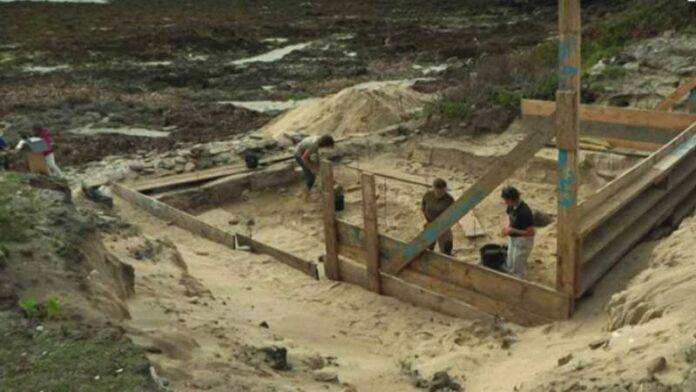On the small island of Benignes in the Brittany region on the tip of the Atlantic coast of France, archaeologists hope to obtain information from household waste buried in sand dunes since the Bronze Age, which constitutes a scientific and human challenge.
“We are excavating the garbage of people who lived here four thousand years ago,” said Yvan Payet, an archaeologist at the University of Western Brittany, in front of the excavation site. “This will allow us to analyze their economy and way of life and find out what types of animals they raised,” reports Al-Rai daily.
Since 2021, an exceptional license has been granted for excavations on this 60-hectare island in the Moline Archipelago, which has been classified as a nature reserve since 1993.
In a square measuring a few square meters dug into the sand dunes, students and archaeologists explore an encased mass that remained embedded in the dunes for thousands of years before a storm in 2014 exposed it.
The site includes several layers of waste, the oldest of which dates back to the Neolithic era.
The most common species in this pile of waste is the clam (or barnacle), the famous shellfish shaped like a traditional Chinese hat. The island’s inhabitants were feeding on this small animal that lives on the rocky shores thousands of years ago. (AFP)

















